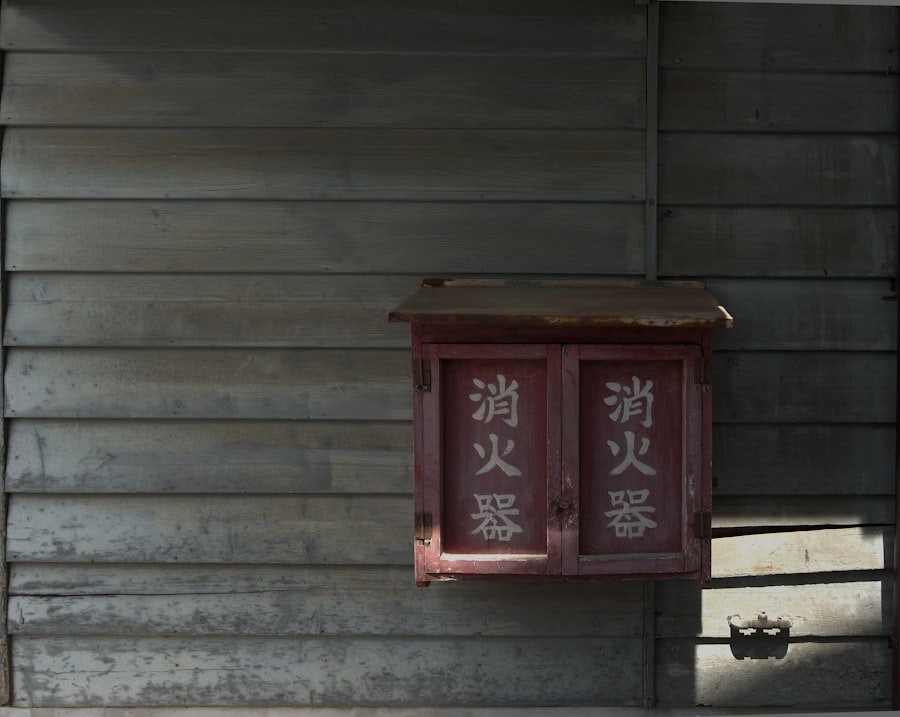Ancient Chinese poetry is a profound and intricate art form that has flourished for thousands of years, reflecting the rich tapestry of Chinese culture, philosophy, and spirituality. Rooted in the early dynasties, such as the Zhou and Han, this poetic tradition encompasses a wide range of styles and themes, from the lyrical verses of the “Book of Songs” to the more structured forms of regulated verse that emerged during the Tang dynasty. The beauty of ancient Chinese poetry lies not only in its aesthetic qualities but also in its ability to convey deep emotions and philosophical insights, often drawing upon nature, human experiences, and the cosmos.
The significance of ancient Chinese poetry extends beyond mere literary appreciation; it serves as a window into the collective consciousness of a civilization that has long valued harmony, balance, and introspection. Through its vivid imagery and evocative language, poetry has been a means of expressing the complexities of human existence and the relationship between individuals and the universe. As we delve into the connections between ancient Chinese poetry and practices such as Qigong, we uncover a rich interplay of art, philosophy, and physical movement that can enhance our understanding of both disciplines. Spaces are filling up fast! Register for Chinese classes at the LC Chinese School in Oslo today.
Table of Contents
ToggleSummary
- Ancient Chinese poetry is a rich and profound art form that has been cherished for centuries.
- Chinese poetry and Qigong are deeply connected, both focusing on harmony, balance, and the flow of energy.
- Symbolism in ancient Chinese poetry offers a deeper understanding of nature, emotions, and the human experience.
- The flow and rhythm of Chinese poetry mirror the graceful movements of Qigong, creating a harmonious connection.
- By incorporating emotions and imagery from Chinese poetry, practitioners can enhance their Qigong practice and deepen their spiritual experience.
Understanding the Connection Between Chinese Poetry and Qigong
The connection between Chinese poetry and Qigong is deeply rooted in the shared philosophical foundations of both practices. Qigong, an ancient system of physical exercises and breathing techniques, aims to cultivate and balance the vital energy known as “Qi.” This concept of Qi is also prevalent in Chinese poetry, where it often serves as a metaphor for life force, creativity, and emotional expression. Both poetry and Qigong seek to harmonise the mind, body, and spirit, creating a holistic approach to well-being that resonates with the principles of Taoism and Confucianism.
Moreover, the rhythmic qualities inherent in both poetry and Qigong movements create a unique synergy. Just as a poem flows with a certain cadence and structure, Qigong movements are designed to be fluid and graceful. This rhythmic connection allows practitioners to experience a deeper sense of unity between their physical movements and their emotional states.
By understanding this relationship, one can enhance their Qigong practice through the lens of poetic expression, allowing for a more profound exploration of self-awareness and mindfulness.
Exploring the Symbolism in Ancient Chinese Poetry

Symbolism plays a crucial role in ancient Chinese poetry, where images often transcend their literal meanings to convey deeper philosophical ideas. Nature is a predominant theme in this symbolism; mountains may represent stability and endurance, while rivers can signify the flow of life and change. These symbols are not merely decorative; they serve as vehicles for conveying complex emotions and thoughts about existence, mortality, and the human condition.
The use of metaphor in poetry allows for layers of interpretation, inviting readers to engage with the text on multiple levels. Incorporating these symbols into Qigong practice can enrich one’s experience significantly. For instance, envisioning oneself as a mountain during a standing posture can instil a sense of strength and stability, while imagining oneself as flowing water during movement can evoke feelings of adaptability and grace.
By drawing upon the rich symbolism found in ancient Chinese poetry, practitioners can deepen their connection to their movements and cultivate a more profound sense of awareness within their Qigong practice.
Examining the Flow and Rhythm of Chinese Poetry and Qigong Movements
The flow and rhythm inherent in both Chinese poetry and Qigong movements create an enchanting harmony that enhances the experience of each practice. In poetry, rhythm is achieved through careful attention to syllable count, tone patterns, and line breaks. This musicality not only makes the verses more memorable but also evokes specific emotions in the reader or listener.
Similarly, Qigong movements are characterised by their fluidity and grace, with each posture seamlessly transitioning into the next. This rhythmic quality is essential for cultivating Qi and achieving a meditative state. When practitioners synchronise their breath with the rhythm of their movements in Qigong, they create a dynamic interplay that mirrors the cadence of poetry.
This connection allows for a deeper immersion into both practices, fostering a sense of flow that transcends ordinary experience. By embracing this rhythm—whether through reciting poetry aloud or moving through Qigong postures—individuals can tap into a profound sense of presence that enhances their overall well-being.
Incorporating Emotions and Imagery from Chinese Poetry into Qigong Practice
Emotions are at the heart of both ancient Chinese poetry and Qigong practice. Poetry captures the essence of human feelings—joy, sorrow, longing—through vivid imagery and evocative language. These emotions can be harnessed during Qigong practice to deepen one’s connection to self and enhance the overall experience.
For instance, recalling a poignant poem about love or loss can evoke feelings that resonate within the body, allowing practitioners to express these emotions through their movements. Imagery from poetry can also serve as powerful visualisations during Qigong practice. By picturing serene landscapes or vibrant scenes described in poems, practitioners can create mental images that guide their movements.
This not only enriches the physical practice but also fosters emotional release and healing. The integration of poetic imagery into Qigong allows individuals to explore their inner landscapes while cultivating a sense of peace and balance.
Using Chinese Poetry as Inspiration for Qigong Postures and Movements

Chinese poetry offers a wealth of inspiration for developing Qigong postures and movements that resonate with its themes and emotions. For example, one might draw upon the imagery of a bird soaring through the sky to inspire an uplifting arm movement or channel the stillness of a mountain into grounding stances. By aligning specific postures with poetic themes, practitioners can create a more meaningful connection between their physical practice and the emotional depth found in poetry.
Furthermore, creating sequences that reflect the narrative arc of a poem can enhance one’s Qigong practice. Just as a poem unfolds its story through carefully chosen words and images, so too can a series of movements tell a story through physical expression. This approach not only deepens engagement with both practices but also encourages practitioners to explore their creativity as they interpret poetry through movement.
Connecting with Nature Through Chinese Poetry and Qigong
Nature is an integral theme in ancient Chinese poetry, often serving as a source of inspiration for poets who sought to capture its beauty and wisdom. The natural world is depicted in various forms—mountains, rivers, flowers—each symbolising different aspects of life and existence. Similarly, Qigong emphasises harmony with nature through its movements that mimic natural phenomena such as flowing water or swaying trees.
This connection fosters a sense of unity with the environment and encourages practitioners to cultivate mindfulness. By immersing oneself in both nature-inspired poetry and Qigong practice outdoors, individuals can deepen their connection to the world around them. Practising Qigong amidst trees or by a river while reciting nature-themed poems can create an enriching experience that heightens awareness of both internal sensations and external surroundings.
This synergy between poetry and nature enhances one’s ability to find peace within oneself while fostering appreciation for the beauty that exists beyond.
Finding Balance and Harmony in Qigong Through the Wisdom of Chinese Poetry
Balance and harmony are central tenets in both ancient Chinese poetry and Qigong practice. Poetry often reflects these ideals through its exploration of dualities—light versus dark, joy versus sorrow—inviting readers to contemplate the interconnectedness of opposing forces. In Qigong, achieving balance involves harmonising breath, movement, and intention to cultivate Qi effectively.
By integrating poetic wisdom into their practice, individuals can gain insights into achieving equilibrium within themselves. For instance, reflecting on poems that explore themes of balance can inspire practitioners to focus on maintaining stability during challenging postures or transitions in movement. This mindful approach encourages individuals to embrace both strength and softness within their practice while fostering resilience in facing life’s challenges.
Ultimately, by embodying the wisdom found in ancient Chinese poetry, practitioners can cultivate a deeper sense of balance that extends beyond their physical practice into daily life.
Enhancing Mindfulness and Meditation in Qigong with Ancient Chinese Poetry
Mindfulness is an essential aspect of both Qigong practice and ancient Chinese poetry. The act of being present—whether through mindful movement or attentive reading—allows individuals to connect with their inner selves on a profound level. Ancient Chinese poetry often invites contemplation through its layered meanings and emotional depth; similarly, Qigong encourages practitioners to focus on their breath and bodily sensations as they move through various postures.
Incorporating poetry into meditation practices within Qigong can enhance mindfulness significantly. Reciting verses aloud or silently during meditation can anchor one’s thoughts while fostering a deeper connection to emotions stirred by the words. This integration creates an enriching experience that encourages self-reflection while cultivating tranquillity—a vital component for achieving inner peace.
Applying the Principles of Chinese Poetry to Qigong for a Deeper Spiritual Experience
The principles found within ancient Chinese poetry offer valuable insights for enhancing one’s spiritual journey through Qigong practice. Themes such as impermanence, interconnectedness, and self-discovery resonate deeply within both disciplines. By applying these principles during Qigong sessions—whether through intentional breathing or mindful movement—practitioners can cultivate a more profound spiritual experience that transcends physicality.
For example, reflecting on poems that explore themes of transience can inspire practitioners to embrace each moment fully during their practice without attachment or expectation. This perspective fosters acceptance of life’s ebb and flow while encouraging individuals to connect with their true essence beyond external circumstances. Ultimately, integrating poetic principles into Qigong allows for transformative experiences that nurture spiritual growth.
Embracing the Wisdom of Ancient Chinese Poetry in Your Qigong Practice
In conclusion, embracing the wisdom found within ancient Chinese poetry can significantly enrich one’s Qigong practice by fostering deeper connections between mind, body, spirit—and nature itself. The interplay between poetic imagery, emotional expression, rhythmical flow—and mindful movement creates an immersive experience that transcends traditional boundaries between art forms. As practitioners explore these connections further—whether through incorporating poetic themes into postures or finding inspiration in nature—they open themselves up to transformative experiences that nurture holistic well-being.
For those interested in delving deeper into this harmonious relationship between ancient Chinese poetry and Qigong practice, consider enrolling in courses at LC Chinese School in Oslo. The school offers comprehensive programmes designed to explore not only language but also cultural aspects such as literature—including poetry—and traditional practices like Qigong. By engaging with these courses at LC Chinese School, individuals can cultivate a richer understanding of both disciplines while enhancing their overall journey towards balance, harmony—and self-discovery through movement inspired by poetic wisdom.







